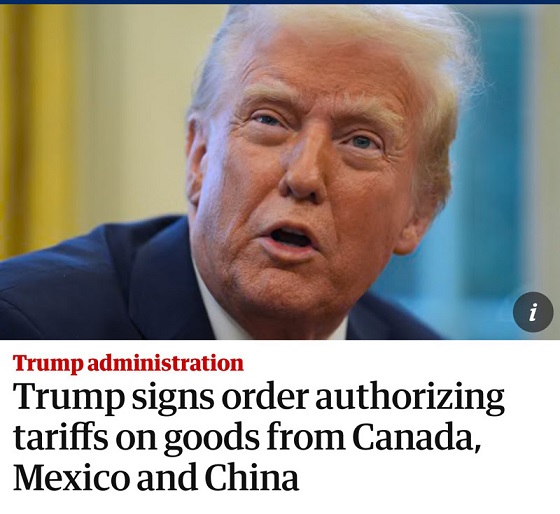Also Interesting
Top Scorers in FIFA World Cup Tournaments

The FIFA World Cup is one of the world’s most prestigious and popular sporting events. Since the 1930s, FIFA has organized its tournament every four years, almost uninterrupted. And in its 90+ year history, the fans have seen some excellent players and teams raise hell in the various stadiums worldwide. But many still wonder, who are some of the top scorers in the history of the World Cup? We are looking at stats and history to compile a list of the best players in the Cup’s history.
Pele
It isn’t easy to separate the name Pele from the sport. Often regarded as the greatest footballer in history, Edson Arantes do Nascimento, better known as Pele to the world, began his career at the tender age of 15. By 16, he was already playing for the Brazil national team. In terms of scorers, he is Brazil’s all-time leading player, with 77 goals in 90-or-so games. He holds several records, including Guinness World Record for most goals scored, with over 1200 in 1300ish games.
It might surprise you that Pele needs to hold the record for the most goals scored during the World Cup. Though he has been on the winning team three times, and he certainly is no slouch, Pele has scored 12 goals in the FIFA competition. Twelve goals in 14 matches make him one of the best players in the top 5 FIFA World Cup scorers.
Just Fontaine
Just Fontaine is a legend in the sport. One of France’s most prolific forwards, Fontaine made his name as a forward for USM Casablanca. However, he shone on the international stage as France’s forward. On the international scene, Monsieur Fontaine competed at several prestigious events. Most notably, he cemented his legend during the 1958 World Cup.
The 1958 iteration of the World Cup was held in Sweden, marking the first time a Nordic country had served as a host. While the French team did not make it to the finals, they did go home with some accolades, largely thanks to Just Fontaine. In the six matches in which France did compete, Monsieur Fontaine managed to score thirteen goals. To this day, this is the record for most goals scored during a single edition of the World Cup, and Fontaine is one of the top 5 goal scorers in the event’s history.
Miroslav Klose
Miroslav Klose is a German of Polish descent who coaches Austria’s Rheindorf Altach. As far as Germany is concerned, Miroslav Klose is one of the all-time top scorers, and to this day, he holds the record for most goals scored in World Cup tournaments. And while his coaching career is relatively new (going on since 2016), most football fans remember Mr. Klose for his impressive showings during his time on the field.
Klose has competed in four different iterations of the World Cup from 2002 until 2014. During these four editions, he competed in 24 matches. In these matches, Miroslav Klose scored 16 goals, one more than previous record-holder Ronaldo Nazario. These accomplishments propel Miroslav to the status of superstar, and he is still considered one of the greatest players that Germany has ever produced.
The 2022 Edition’s Best Players
This article’s final section looks at some of the top scorers in the 2022 edition of the World Cup. Excitement has been bubbling for the past year. So, now that the tournament is in full swing, many people are looking for the best sites to bet on the FIFA World Cup. So, with this section, we would like to provide insight into which players are worth watching.
First, France’s Kylian Mbappe will take the top spot in 2022. In the four games France has already played, Mbappe has shown that he deserves consideration as one of the best active players. Already, the young player has scored five goals, putting him square in the lead as the top scorer of the 2022 World Cup, at least for now.
Apart from Mbappe, many players have shown they are worth their salt. Most notable, of course, is Lionel Messi. He is earning his paycheck, having already scored three goals in the tournament. Also in the “three goals club” are Spain’s Alvaro Morata, England’s Bukayo Saka and Marcus Rashford, the Dutchman Cody Gakpo, and France’s Olivier Giroud.
Honorable Mentions
The three men mentioned in this article are only a few of the greatest goal-scorers. Due to necessity, we had to leave off legends like Brazil’s Ronaldo, who, in 19 matches, has scored 15 goals. This accomplishment puts him squarely at the number 2 spot, behind only Miroslav Klose. Other big names whose achievements should be acknowledged are Gerd Muller (14 goals in 13 matches), Sandor Kocsis (11 goals in 5 rounds), and Jurgen Klinsmann (11 goals in 17 games).
Also Interesting
The bizarre story of Taro Tsujimoto

The National Hockey League (NHL) has seen its fair share of strange moments, but few compare to the bizarre and hilarious tale of Taro Tsujimoto, a player who never existed. His “selection” in the 1974 NHL Draft remains one of the most legendary pranks in hockey history. If you want to wager on actual players, making the 1xBet app download is definitely a great idea.
In the 1970s, the NHL Draft was a much less glamorous event than today. It was a tedious process conducted over the phone, with teams calling in their picks. The 3 biggest highlights of what happened during that year’s draft were:
- the draft dragged on for hours;
- there were multiple rounds and teams selecting unknown prospects from obscure leagues;
- frustrated with the monotony, Buffalo Sabres general manager Punch Imlach decided to have a little fun.
As the 11th round approached, Imlach instructed his team’s representative to draft Taro Tsujimoto, a supposed forward from the Tokyo Katanas of the Japan Ice Hockey League. The name sounded authentic enough. The league officials, unfamiliar with Japanese hockey, accepted the pick without question. By downloading the 1xBet app you will also be able to wager on great NHL teams too.
A small problem
There was a small problem with all of this, as 2 things didn’t exist: Tsujimoto and the Tokyo Katanas. Imlach had completely fabricated the player as a joke, taking advantage of the NHL’s lack of verification. When it comes to NHL wagers, there is no better platform than the 1xBet Canada site.
For weeks, the league listed Tsujimoto as an official draft pick, and even some newspapers reported on Buffalo’s mysterious new Japanese prospect. Eventually, the Sabres admitted the hoax, and the NHL was forced to retroactively erase the selection from its records.
Despite being a fictional player, Taro Tsujimoto took on a life of his own. Buffalo Sabres fans embraced the prank, and over the years, his name has become a cult legend in hockey culture. Some fans even wore jerseys with “Tsujimoto” on the back. The joke persisted so much that when EA Sports released NHL video games, players could occasionally find Tsujimoto in the game’s draft pool as a hidden Easter egg.
More than just a prank, the story of Taro Tsujimoto highlights 2 things: the quirks of old-school sports management and the creativity of one of hockey’s most colorful executives. Today, with the draft process being highly scrutinized and broadcast live, such a prank would be impossible. But Tsujimoto’s legacy lives on as one of hockey’s greatest inside jokes. What is not a joke are the great rewards that a platform like the Canadian 1xBet site can give you.
Also Interesting
60% of Canadians gamble each month – why the industry is going from strength to strength

When it comes to regulating gambling, Canada has a somewhat relaxed approach. The Canadian Gaming Association oversees the industry, but it’s up to individual provinces to enact and enforce any laws relating to online casino gaming, sports betting, traditional casino gaming, and other forms of gambling.
Canada’s online casino gaming laws are not totally clear, but individual provinces are starting to put this right. Ontario was the first and did so when it launched its own regulated igaming market in April 2022. Now some other provinces have followed suit, creating a safer igaming environment for players in those provinces. Below is a look at gambling in Canada compared to other parts of the world, at gaming laws in Alberta compared to other provinces, and at the future of the Canadian, US, and UK gambling industries.
Canada: a forever love of gambling
Gambling in some form or other has always been popular in Canada. Way back in the 1990s, research found six in ten Canadians (60%) gambled every month. Additionally, four in ten (43%) spent between 1 and 20 Canadian dollars on gambling. Fast forward to today and the Canadian gambling market is worth 14.2 billion US dollars as of January 2024, according to data on the website of consumer and market data company Statista.
It seems Canada enjoys wagering just as much as two other countries that love a gamble: the US and the UK. Data on the Statista website shows that 49% of US adults took part in gambling activities in 2023. Fifty-six percent said their attitude towards gambling had relaxed, compared to the 50% of 2019.
The UK returned similar stats for the same year. Forty-eight percent of adults reported engaging in gambling activity. Online casinos generated the most gross gambling yield in 2023, but it was the nation’s National Lottery that people played the most.

Alberta: following Ontario’s lead
The regulatory developments in Ontario have triggered movement in Alberta. In May 2024, Bill 16, the Red Tape Reduction Amendment Act, made it through the process and later received Royal Assent to become law. The act removes the monopoly of gaming by a single government entity and will allow private operators, licensed by Alberta’s provincial regulator, to provide online gaming services in Alberta, meaning players will have a choice of more than one Alberta online casino to play at.
The regulation transforms Alberta into one of the more liberal provinces when it comes to online gambling, others being Quebec, Ontario, and British Columbia.
Several provinces, such as Novia Scotia and Northwest Territories, have no provincially regulated online gaming sites. Some also restrict betting on horse racing and/or other types of sports betting, obliging citizens to use international betting sites for freedom from caps and betting on as many events as they wish.

What lies ahead for the Canadian, US, and UK gambling industries?
Canada’s appetite for gambling is clear, and the industry’s online sector is beginning to thrive. Ontario has enjoyed vast success by creating its own regulated market, one which, in just its first year, saw Canadians place billions in wagers and the industry itself generate more than a billion in total gaming revenue.
Canada can expect to see other provinces follow Ontario’s lead and allow private operators to provide services in the province under license. The purpose of the regulation is player protection. Any province that develops a regulated market will focus on this, so there will also be regulations around the advertising of gambling services.
The US
Gambling online is the future for the US, too, although states are slow to legalize it. As of September 2024, 38 states had legalized sports betting, following the US Supreme Court’s ruling that states could regulate sports gambling directly.
Despite allowing sports betting, some states only permit in-person betting, and only a few states allow online casino gaming. Operators believe online casino gaming is the future of gambling.
The UK
In the UK, the use of artificial intelligence (AI) will get bigger and bigger. Companies have realized AI can enhance players’ experience and are embracing it more and more. For instance, sports betting websites can use it to crunch data and provide iGamers with stats and other data to make better betting decisions. They’re also understanding they can use AI to prioritize content players are likely to be interested in and to personalize their offerings and services to players’ preferences.
Canada enjoys gambling as much as America and the UK. Although laws around igaming are more of a grey area in Canada, some provinces are clearing the issue up by creating regulated markets and experiencing great success. As time goes by, more are sure to follow.
-

 Business2 days ago
Business2 days ago28 energy leaders call for eliminating ALL energy subsidies—even ones they benefit from
-

 2025 Federal Election2 days ago
2025 Federal Election2 days agoCarney’s Cap on Alberta Energy Costing Canada Billions
-

 Business2 days ago
Business2 days agoTrump Tariffs are not going away. Canada needs to adapt or face the consequences
-

 Economy2 days ago
Economy2 days agoSupport For National Pipelines And LNG Projects Gain Momentum, Even In Quebec
-

 Health2 days ago
Health2 days agoDr. Pierre Kory Exposes the Truth About the Texas ‘Measles Death’ Hoax
-

 Business20 hours ago
Business20 hours agoDOGE discovered $330M in Small Business loans awarded to children under 11
-

 Business2 days ago
Business2 days agoWhy a domestic economy upgrade trumps diversification
-

 COVID-1918 hours ago
COVID-1918 hours ago17-year-old died after taking COVID shot, but Ontario judge denies his family’s liability claim

